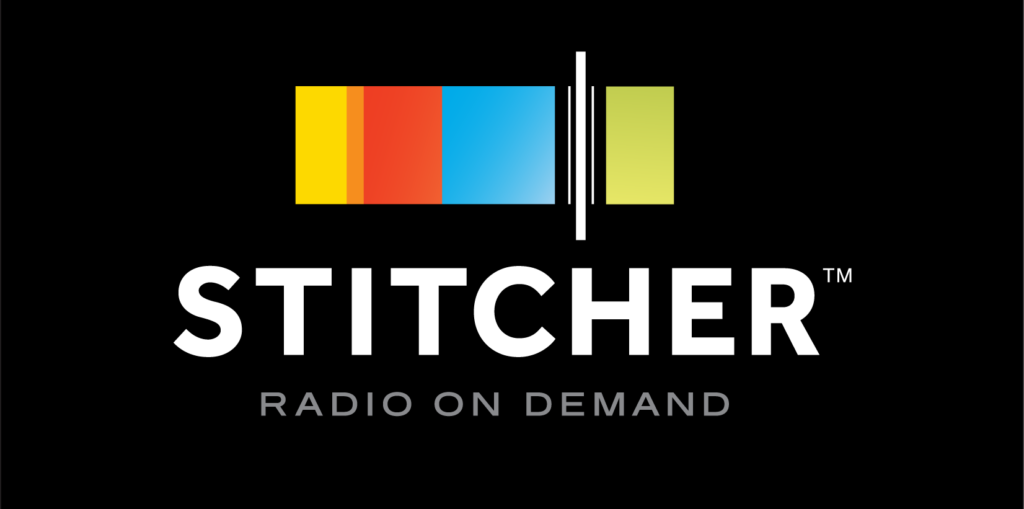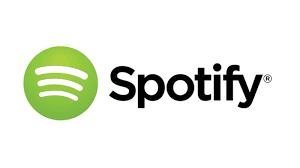
The Real Cost of Tech and Tools for Solopreneurs
Ready to uncover the must-haves and money pits in your solo business tech toolkit? We’ve got you covered in this episode of the ‘Real Cost Of’ series, where we’ll dig deep into the world of tech and tools for solopreneurs. Discover what’s essential, what’s extravagant, and the red flags to watch out for.
Earlier this year on social media, people shared the tech stack they used to run their business. It was fascinating to see what tools business owners were relying on and how much it varied by the size and stage of the business.
Inspired by those posts and the never-ending discussion I have with my community, in this installment of the “Real Cost Of” series, I’m pulling back the curtain on the tech and tools solo business owners use to run their businesses.
Before we get into the details, I want to provide some context for what I share about my business in this episode. I run two different businesses, BS-Free Business and my content production agency, Scoop Studios, which require different tools.
As I’ve previously shared, the agency’s tech stack is much leaner than the one for BS-Free Business, which highlights the requirements of a done-for-you service business that doesn’t rely on digital marketing and a consulting-based one based online.
Must-Have Tools for Solopreneurs
While writing this based on my experience with my own businesses and working with my solopreneur clients, I want to avoid being overly prescriptive. I want to spark ideas for you and get you thinking strategically about what tech and tools you may (or may not) need.
Here in 2024, there are some basics we all need, including a computer, phone, basic website, domain, and Google Suite for email, file storage, spreadsheets, forms, word processing, and slides.
From there, what tools we use will depend on who our clients are, the type of services we offer, our skill level with technology, and other key factors. This is a very important distinction, as it’s so easy to think you need a certain tool because everyone is talking about it when it wastes your time and money.
When I first entered the online business world, I got sucked into the hype around certain tools and wasted so much time and money on platforms I didn’t need. When celebrity entrepreneurs promote a tool, it’s easy to fall into the trap of believing that buying a tool will give us a business just like them
What tech and tools you buy matters less than if they work for you; many times, less is more. Here’s a rundown on a “basic” tech stack different types of businesses may need:
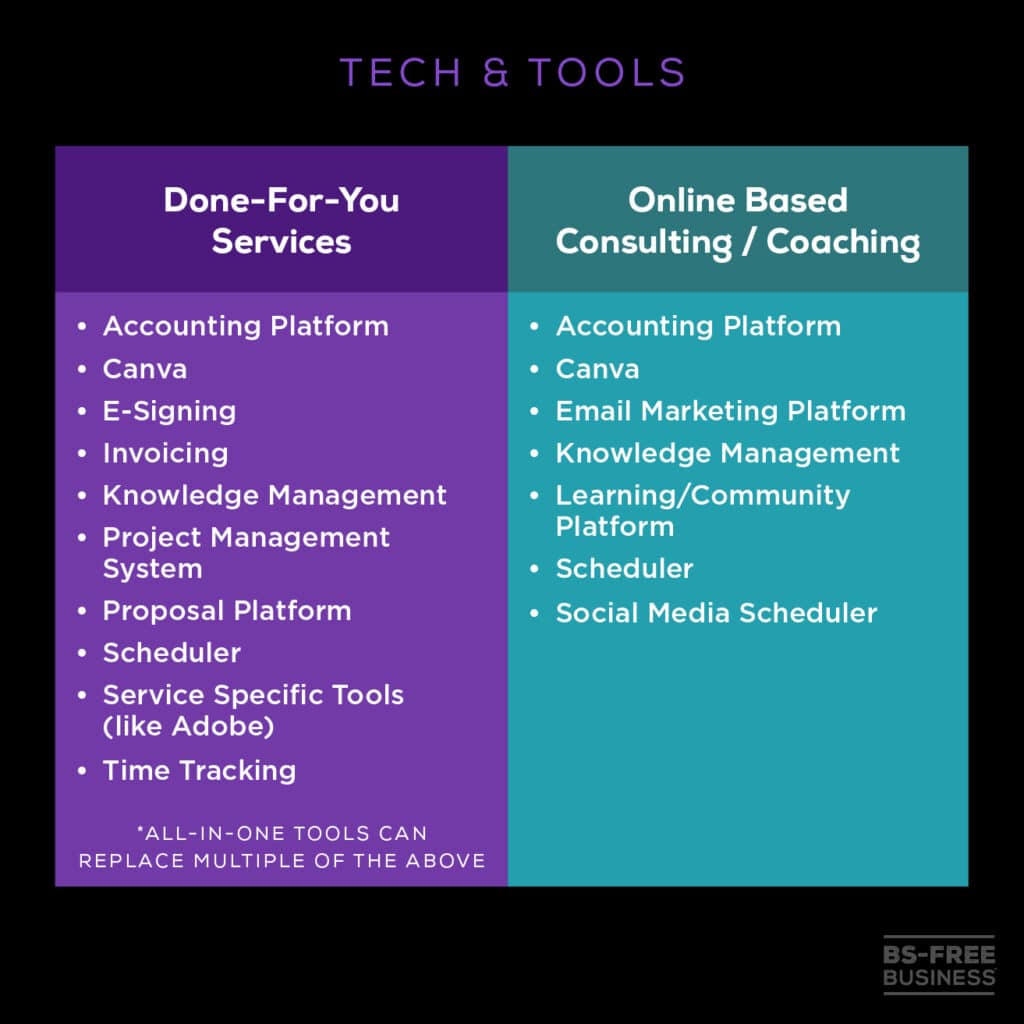
*Note: I have not included a payment processing platform like Stripe or PayPal as those costs are based on how much money you process.
I could add many more suggestions for tools and tech (like a CRM for done-for-you service businesses), but my goal is always for you to keep more of your revenue in your pocket as these costs can quickly eat up your profit.
The Hard Costs of Tech and Tools
When calculating the hard costs of your tech and tools, some of this will come down to your personal preferences between platforms. Remember, there’s no right or wrong, this is about having a firm on all the costs of your tools.
Looking at the tools discussed above here are some approximate costs based on 2024 pricing in USD.
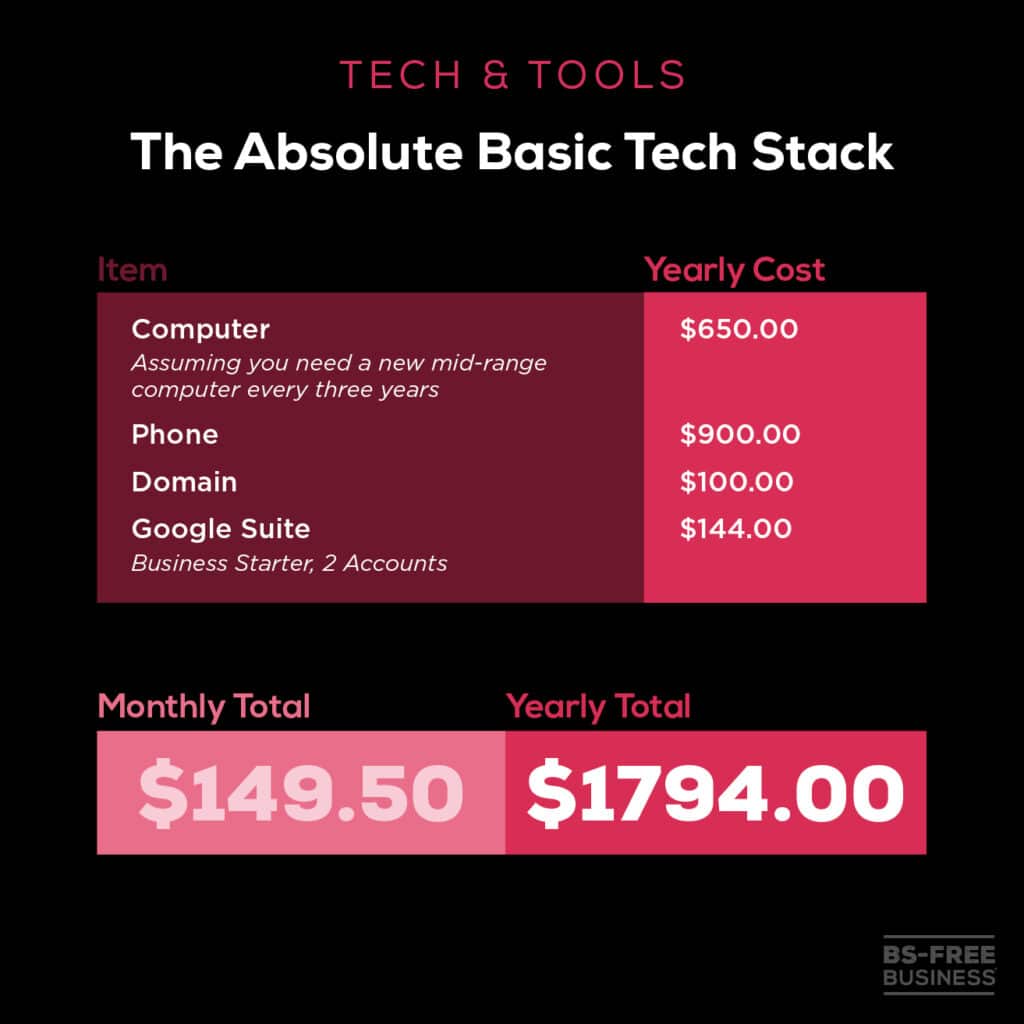
For the bare minimum, we’re already in for $150 dollars a month, and people rarely have this lean of a tech stack.
*These cost breakdowns are for illustrative purposes only, and using all-in-one tools such Honeybook, Bonsai or Dubsado would eliminate some of these costs.

Interestingly, the tech stack for both done-for-you and online-based consulting or coaching is fairly close. When you look at these numbers, plus the “basic” costs breakdown, it brings the monthly tools cost to a minimum of $300 or $3600 per year.
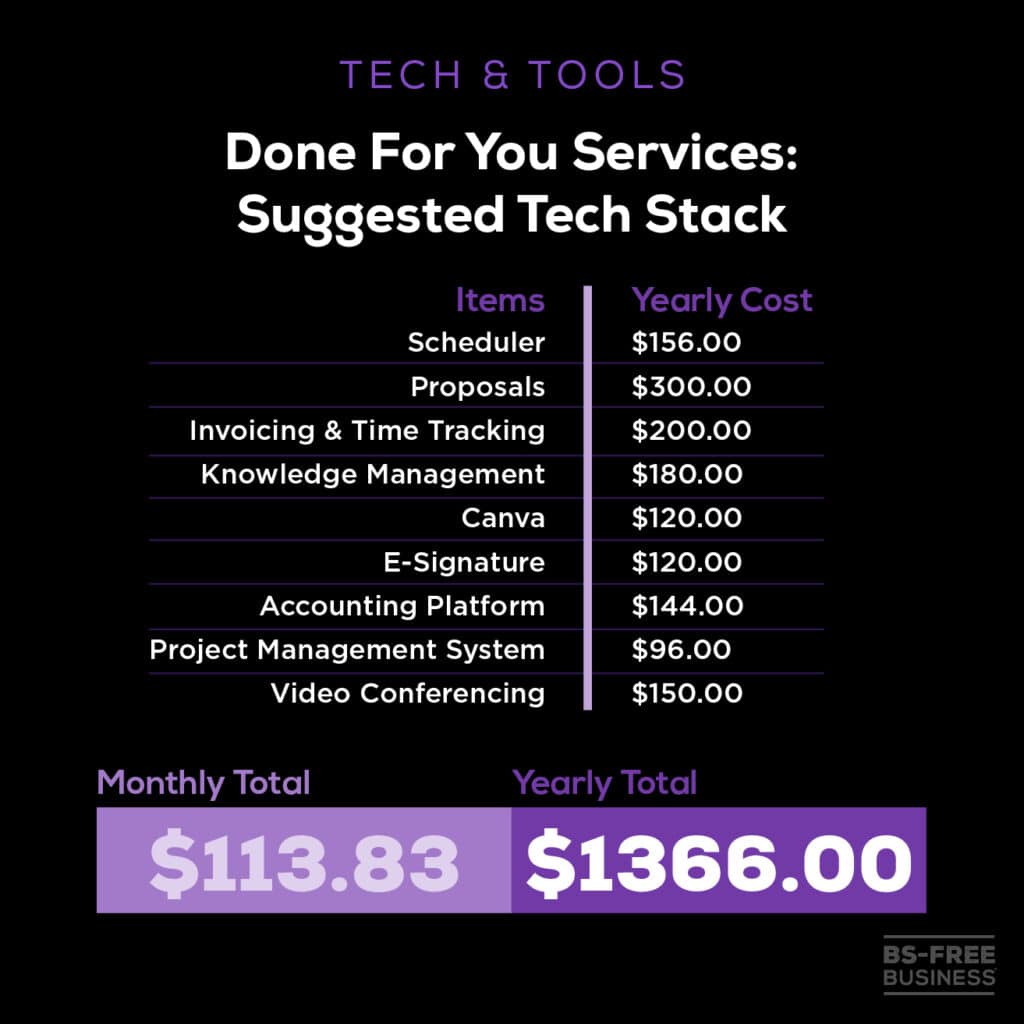
Remember, this is for the essentials, and the reality is that as your business grows, you’ll likely add more tools and tech. My experience has proven this over the last 10+ years, and truthfully, my hard tool costs with BS-Free Business are much higher than with the agency.
The Cost of My Tech Stack: Agency vs. Online Consulting
As the “hard costs” of tech and tools above are estimates designed to help put some numbers together, let’s look at the cost of my current tech stack.
In 2023, my tech and tools cost $17,800.86 USD. Given that we’re running two businesses with multiple team members, this is nowhere near what I would expect the average solopreneur to spend.
But it’s a good real-world example of how our tools and tech costs have increased as we’ve grown over time. When I started my business in 2005, my tool costs were a fraction of this cost with the “basics” outlined above and a PR database. My monthly tools cost was $400 a month, or $4800 per year.
You’re probably wondering exactly what that nearly $18k above was spent on, so here’s a quick rundown of what tools and tech we’re currently using.
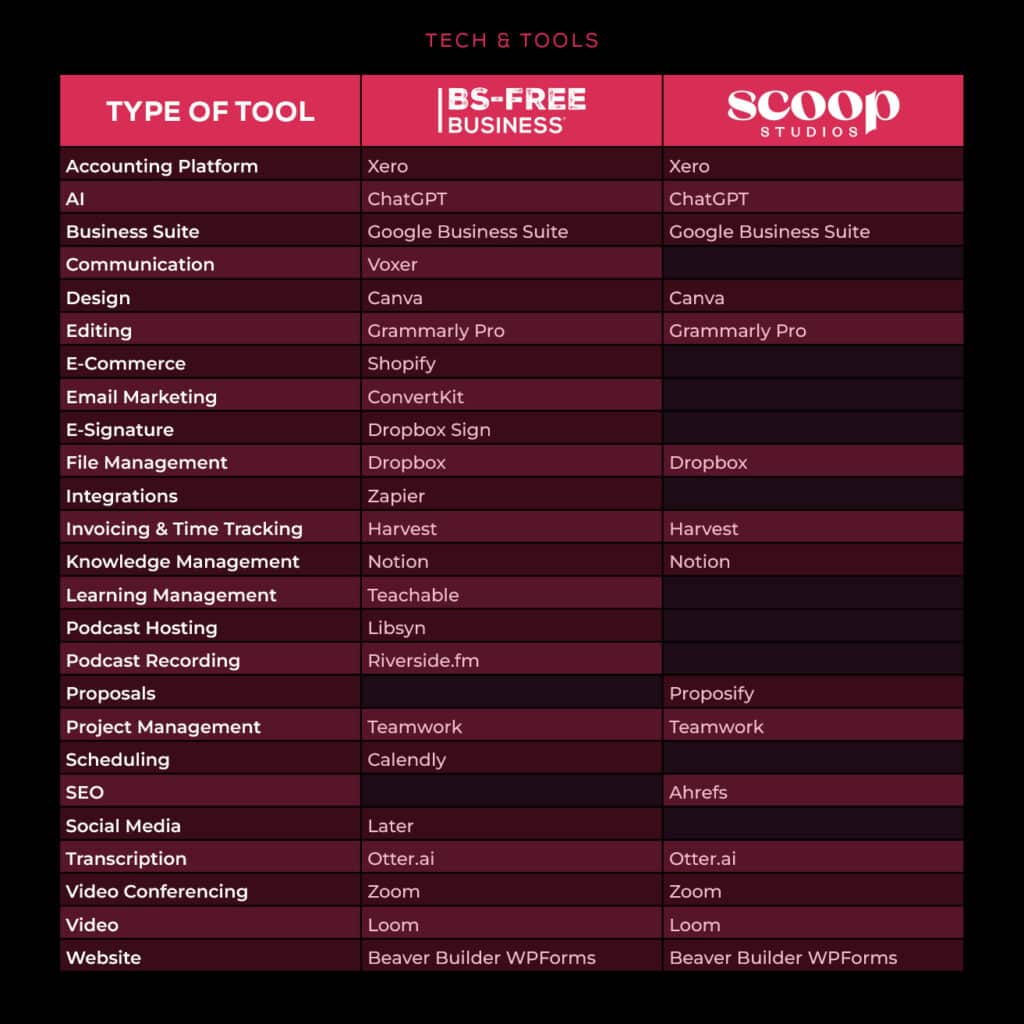
You can see that some tools are split between the two businesses, and then others are specific to the business. The number of tools for BS-Free Business is much longer and is currently about 66% of the total spend.
On the BS-Free Business side, Teachable is currently our largest tech expense, and we’ll be looking to clean that up before it renews next fall to bring down the overall cost.
The large bill for Teachable is a great example of how your tech stack can easily become bloated over time. I’m constantly looking at these expenses and asking if there’s a way we can reduce the costs while balancing the time we save with many of these tools.
Red Flags: When Tech Costs More Than it Delivers
Beyond the financial cost of your tech stack, many hidden costs often get missed.
With tools for solopreneurs, there’s the reality of the learning curve of different systems. You need your tools to work for your brain and help you be more professional and productive.
Thanks to the phenomenon of sunk cost fallacy, you may find yourself sticking with a system costing you more than it provides. Your time is incredibly valuable and if a tool or platform is simply not working for you, you may be further ahead to find one that does.
Speaking from my own experience as a neurodivergent human, I’ve wasted far too much time trying to make a tool work for me, turning it into an obstacle to getting things done.
As Meighan O’Toole wrote in her piece on technical debt, we need to realize that not all tools are the same, and many of them actually turn into a form of “bad debt” in our business. She also shared how tools are there to solve problems for us and “help us do our jobs better, not do them for us.”
A great example of this is I’ve seen alot of hype lately about a CRM platform. This agency-level tool can replace many other tools but comes in at $297 a month, and most people I see talking about it probably don’t need it.
I understand the appeal of this, as back in 2013, I bought a similar tool, and frankly, this was a terrible business decision. I failed to understand that it would take a lot of skill and expertise to set up and run, and I had someone on a monthly retainer for the two years I was on the platform.
Eventually, we migrated our email marketing to ConvertKit and set up a Google Sheet for our agency leads. I’ve never looked back. This is both a cautionary tale and an example of how simple tools can be a more sustainable choice.
Any tech or tools you’re using, especially as a solopreneur should be enabling you to free up time, not adding complexity, drama, and stress.
Finally, if you’re considering adding a new tool to your business, figure out what’s involved in migrating to that system or setting it up from scratch. Also take the time to investigate what’s required to leave that tool, as you don’t want to find yourself in a future situation where you’re unable to switch systems.
In 2023, the average cost of Software as a Service (aka SaaS which most of the tools you use probably are) increased by 12%. There’s no guarantee that the current cost of your tool won’t rise exponentially or change the features, so you want to be able to quickly and easily move if needed.
Wrap-Up: Cost and Complexities of Tools for Solopreneurs
So there you have it, a fluff-free walkthrough of the tech and tools for solopreneurs. Remember, it’s not just about what you pay but also about what these tools deliver.
Beware of falling into the traps of shiny objects or sunk cost fallacy, where you’re spending on a system that doesn’t serve you
In the next installment in The Real Cost Of series, we’ll look at the real costs of creating an agency, which goes way beyond the financials.


